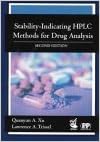Introduction to Photostability Testing
Photostability testing is a crucial aspect of pharmaceutical stability studies aimed at evaluating the susceptibility of drug products to degradation upon exposure to light. It assesses the photostability of drug substances and products to ensure their quality, safety, and efficacy under normal storage and use conditions.
Purpose of Photostability Testing
The primary objectives of photostability testing include:
- Assessment of Light Sensitivity: To determine the susceptibility of drug products to photodegradation when exposed to natural or artificial light sources.
- Identification of Photodegradation Pathways: To identify degradation pathways and the formation of photodegradation products induced by light exposure.
- Evaluation of Packaging Adequacy: To assess
Conducting Photostability Testing
Photostability testing typically involves:
- Sample Preparation: Preparing samples of the drug product in final packaging configurations, including both exposed and protected samples.
- Exposure to Light: Subjecting the samples to controlled light exposure using light cabinets, chambers, or other specialized equipment that simulate natural or artificial light conditions.
- Monitoring Degradation: Regularly monitoring the samples for changes in appearance, potency, and degradation products using stability-indicating analytical methods.
- Data Analysis: Analyzing the photostability data to assess degradation kinetics, identify degradation pathways, and determine the photostability of the drug product.
- Reporting: Documenting the results of photostability testing in comprehensive reports, including conclusions and recommendations for product labeling and storage conditions.
Regulatory Considerations
Photostability testing must comply with regulatory guidelines, such as those provided by the International Council for Harmonisation (ICH) and regional regulatory agencies:
- ICH Guidelines: Following ICH guidelines, such as ICH Q1B, which provide recommendations for conducting photostability testing and evaluating stability data.
- Regulatory Submissions: Providing photostability data as part of regulatory submissions to support product approval and labeling claims.
Conclusion
Photostability testing is essential for assessing the light sensitivity and photostability of pharmaceutical products, ensuring their quality, safety, and efficacy under normal storage and use conditions. By conducting these tests in accordance with regulatory guidelines, pharmaceutical companies can demonstrate product stability and compliance with regulatory requirements, facilitating market approval and patient access to high-quality medications.
